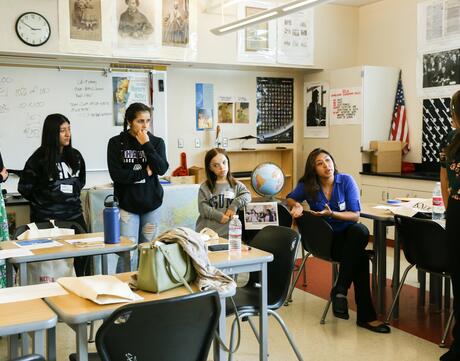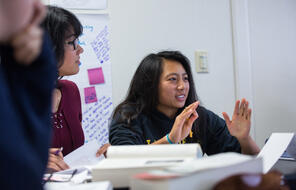
Navigating Social Hierarchies
At a Glance
Language
English — USSubject
- English & Language Arts
Grade
7–8Duration
Two 50-min class periods- Culture & Identity
Overview
About This Lesson
Negotiating belonging can feel fraught in middle school. All too often, the pressure to fit in results in young people changing the way they dress, speak, and act (or choosing to remain silent), all in an effort to be part of an “in” group. As students learned in previous lessons, our strong desire to be included is an innate human trait, one that can lead individuals to conform to the norms of a group, even if it means compromising their values.
In this two-day lesson, students will apply what they have learned to the reading and analysis of a powerful short story by Misa Sugiura. The activities prompt close reading and discussion as students consider the ways our fears of being excluded can shape our choices and actions, even causing us to intentionally or unintentionally hurt others in an effort to secure our own belonging. In the end, students will consider how Sugiura’s story helps them think about ways to reduce the barriers to belonging in their class and school community.
Preparing to Teach
A Note to Teachers
Before teaching this lesson, please review the following information to help guide your preparation process.
Lesson Plans
Activities
Day 1 Activities
Day 2 Activities
Homework
Materials and Downloads
Quick Downloads
Download the Files
Download allGet Files Via Google
Navigating Social Hierarchies
The Dangers of Being an Outsider
Negotiating Belonging in Trevor Noah’s <em>Born a Crime</em>
Additional Resources
Unlimited Access to Learning. More Added Every Month.
Facing History & Ourselves is designed for educators who want to help students explore identity, think critically, grow emotionally, act ethically, and participate in civic life. It’s hard work, so we’ve developed some go-to professional learning opportunities to help you along the way.
Exploring ELA Text Selection with Julia Torres
On-Demand

Working for Justice, Equity and Civic Agency in Our Schools: A Conversation with Clint Smith
On-Demand

Centering Student Voices to Build Community and Agency
On-Demand

















